Atlas silkmoth
Attacus atlas
The Atlas moth is the world's largest silkmoth in terms of overall wing span; there's a moth called the Hercules moth that has more total wing surface area, so it's a toss-up which one is "World's Biggest Moth." But anyway, it's huge. It's used in parts of the Orient for a kind of silk called fagara. The empty cocoons are used as-is for small pocket change purses in Taiwan, sometimes with little zippers sewn in!
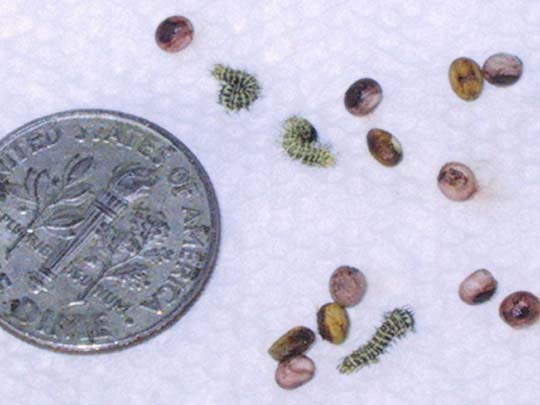
These eggs began to hatch on July 7, 2004. They are not particularly large in comparison to others like Polyphemus and Cecropia. They are mottled, almost like pinto beans.

July 11, 2004. Within four days, they have grown quite a bit! With their black and white spiky stripes, they remind me of something out of the movie BeetleJuice.
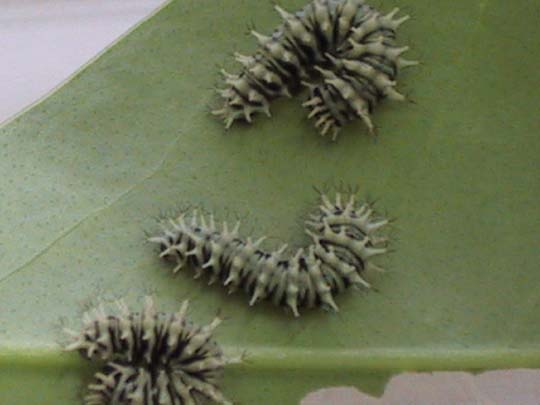
They seem to like this folded-in-half pose for when they're not eating. I think it makes them look kind of coy, as if they're peeking at you over their shoulders. Not that worms have shoulders, but you get the idea. July 11, 2004.
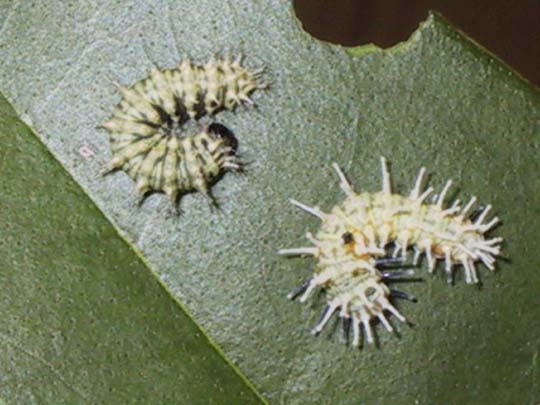
On July 12, the first-instar cats started shifting into the second instar. Their spikes look so delicate and fine, like little whiskers! Over the next day or so, they thicken up, until they look as if somebody sprayed Christmas-tree flocking on them.
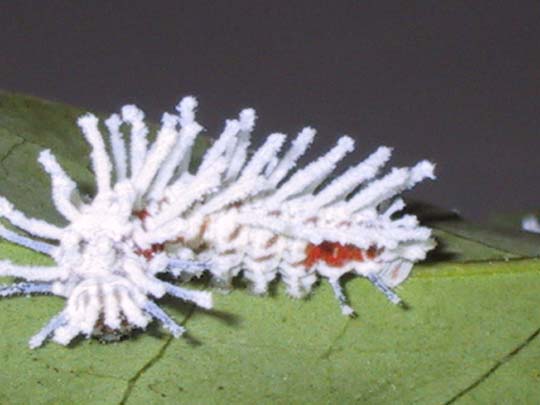
July 18, one caterpillar has shifted into the third instar. Its head is hardly visible; the spiky scoli are all you notice. It has red patches near "shoulder" and "hip" areas; I don't know what their purpose is in the overall scheme of things, but they're cool looking. The rest are still in the second instar. There are a dozen remaining of the original 18; a couple didn't make the first change, and one died in the second instar.
August 8. Unfortunately, these did not do well. One by one, they dropped off. The last couple of them hung on for almost a month, but then they too died. I may try these again, since they're such a beautiful moth and make so much silk - but they sure weren't as easy to rear as I've heard. I think it was a matter of keeping up enough temperature and humidity without getting mold.
-----
I decided to try a different route with these handsome moths, and acquired a couple of cocoons.
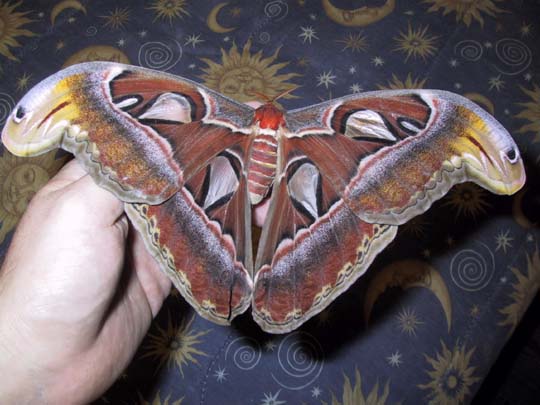
This beautiful moth eclosed on October 31, 2004.
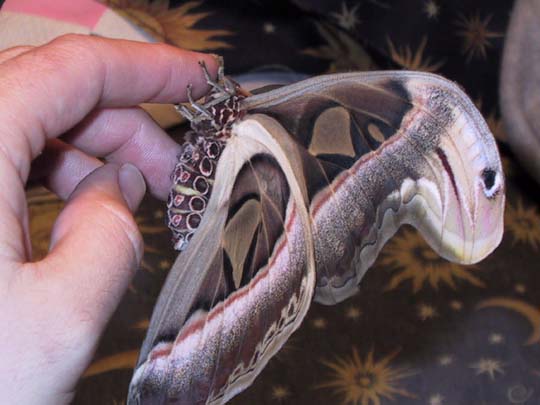
The underside of the wings is beautifully patterned in browns and pinks and shades of beige.

It's easy to discern that it's a female, by the bulging abdomen full of eggs. Unfortunately, both the cocoons that I got were females, so no pairing was possible. The pattern of spots in the velvety fur of the abdomen is really beautiful.
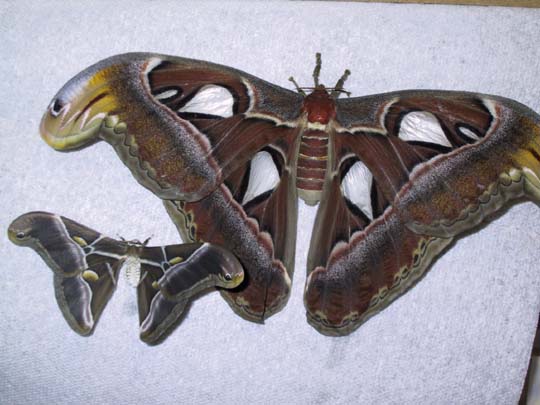
Here's a shot with an Eri moth for scale. The Atlas moth is just over nine inches across the top of the wings from side to side, while the Eri is closer to four.

The "windows" on the wings are almost completely transparent; you could read large type through them. These areas don't have any of the color scales on them, and are just the wing base.
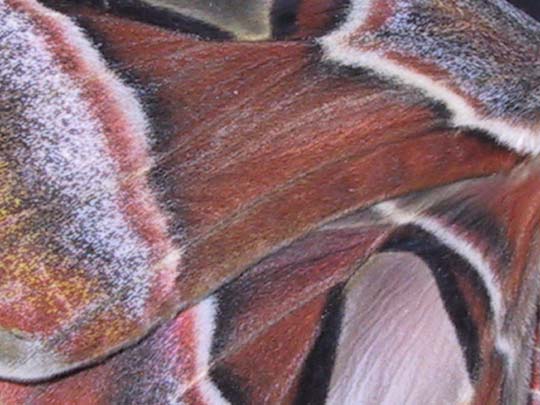
The color patterns on this moth are just amazing. Here, you can see the pink of my hand through one of the windows at the bottom right.
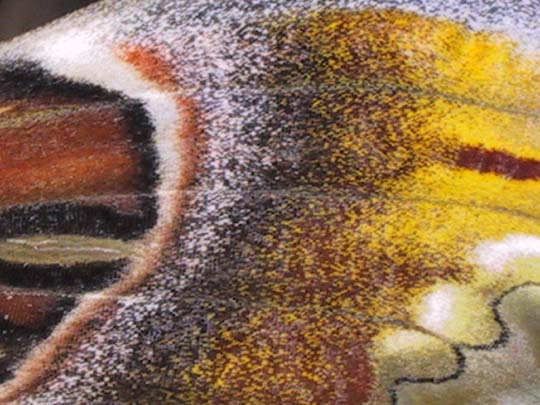
A shot of the forewing.
Because there was no pairing, this line won't continue, but that's essentially the whole life cycle except for the spinning and overwintering.